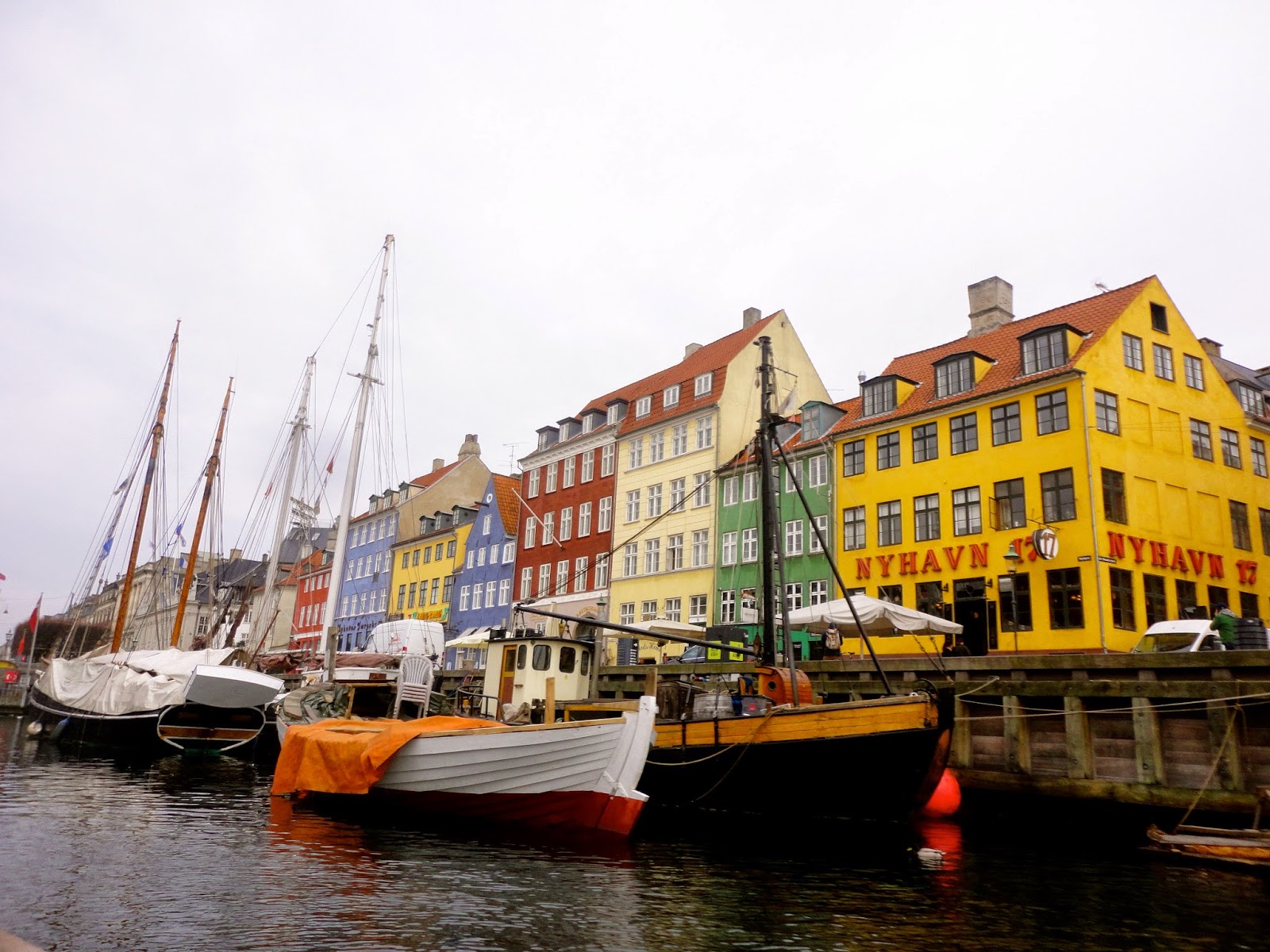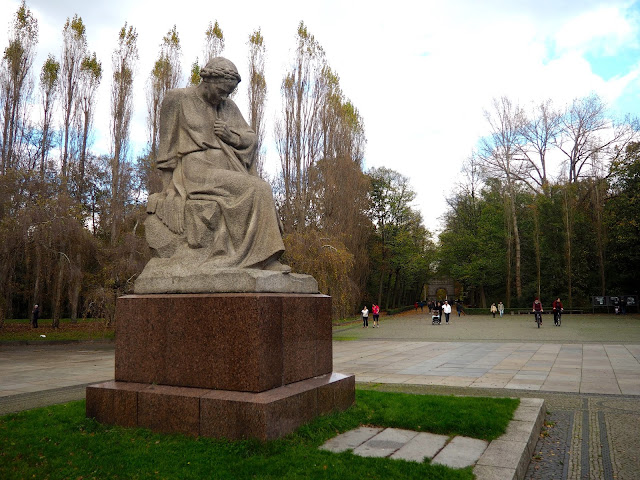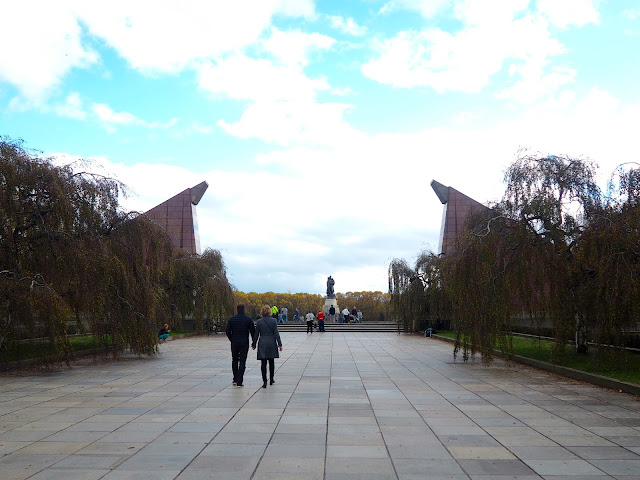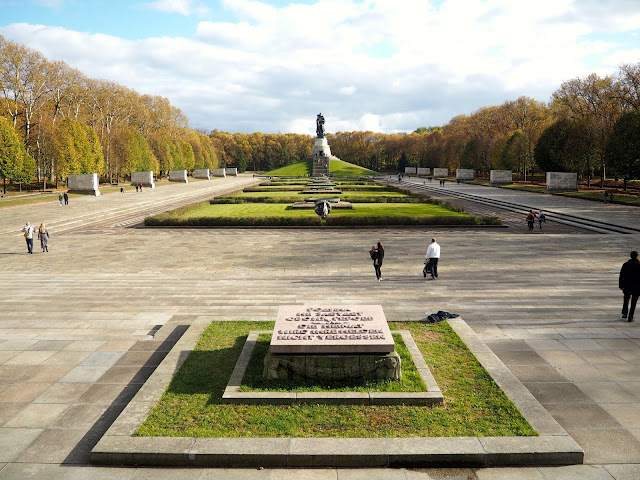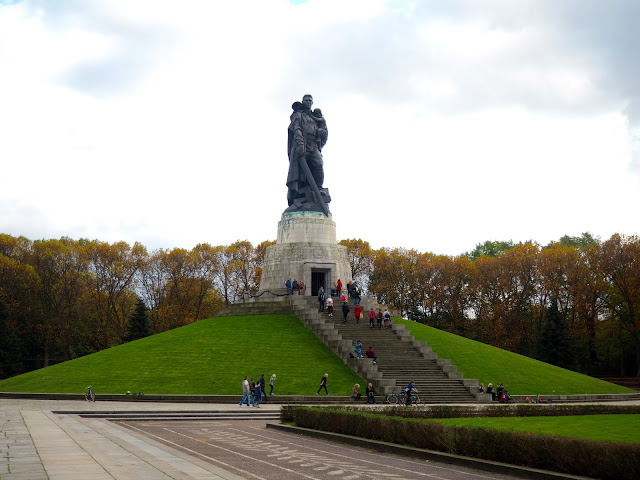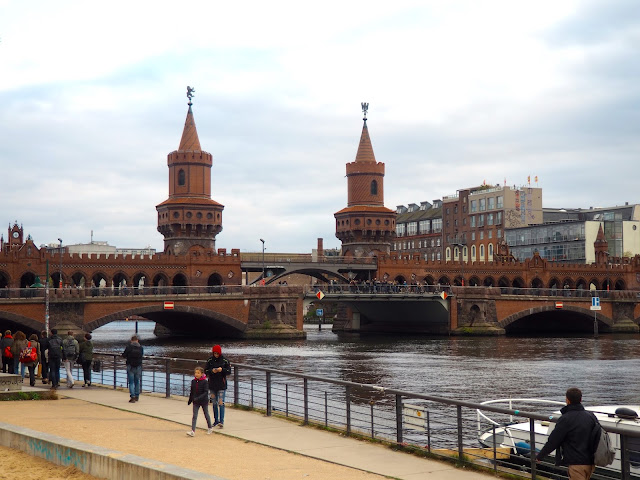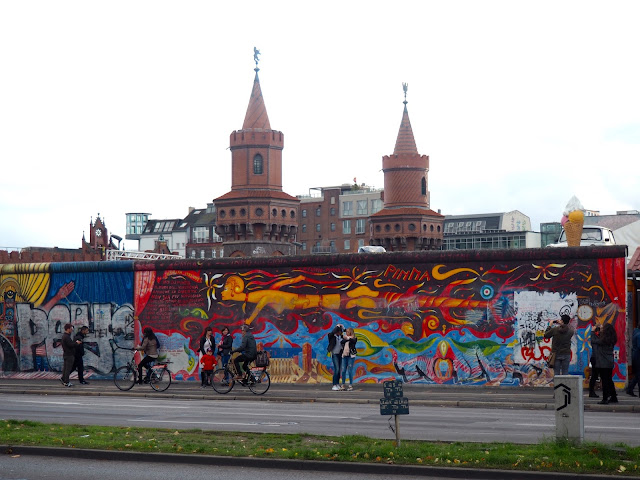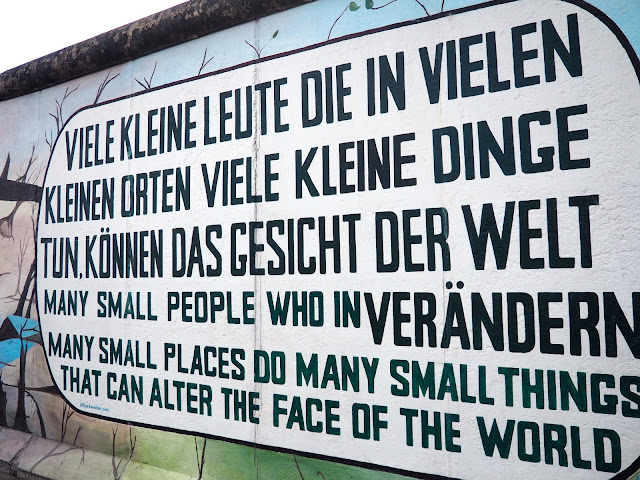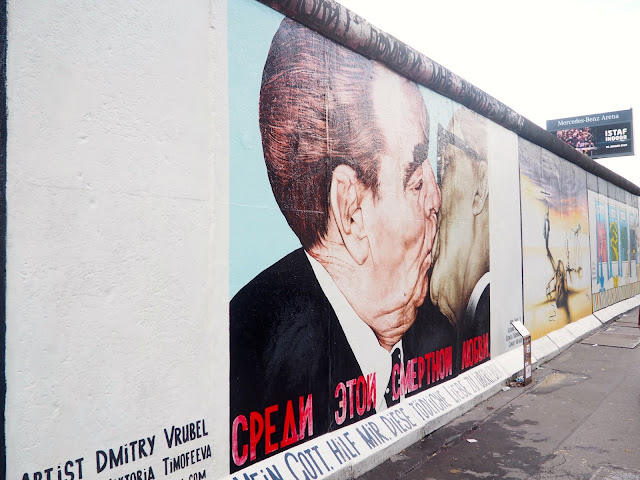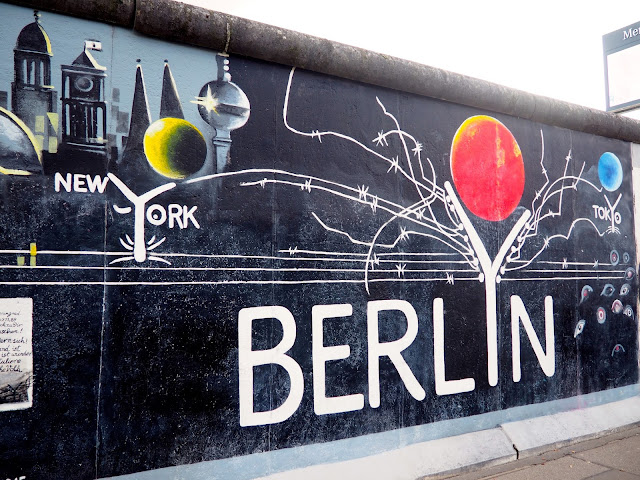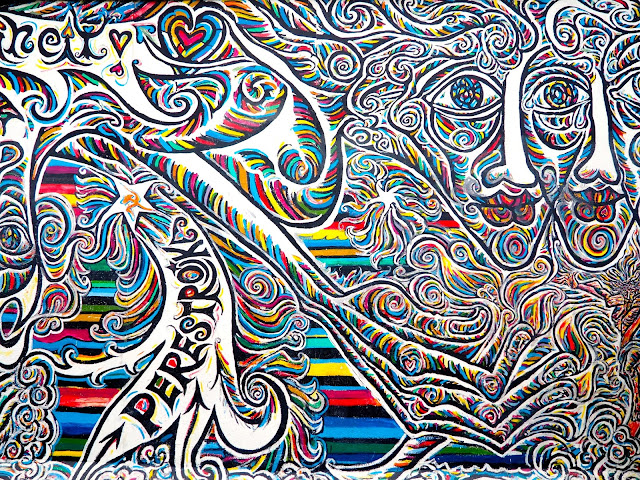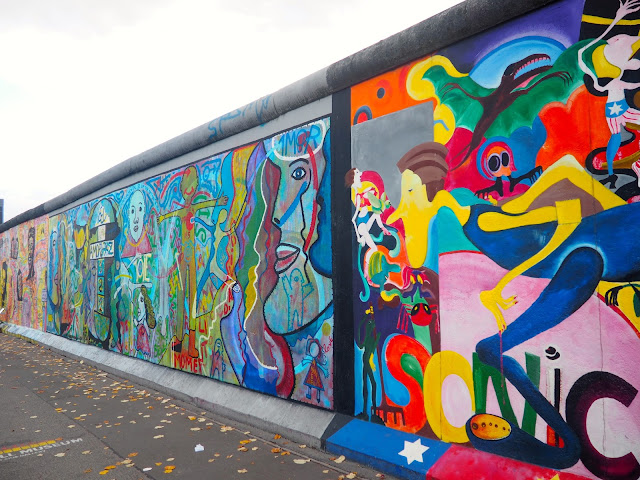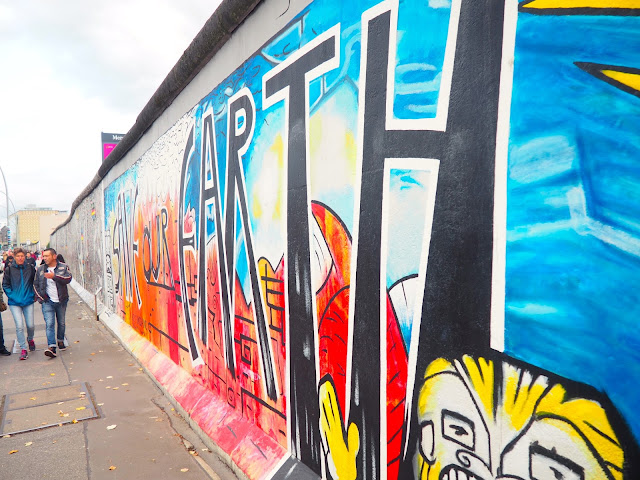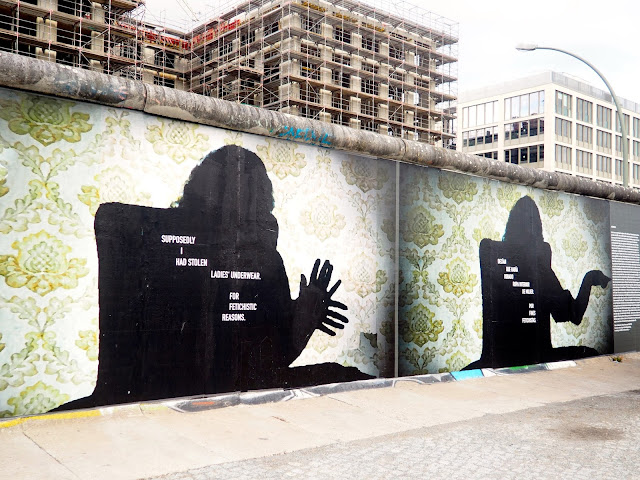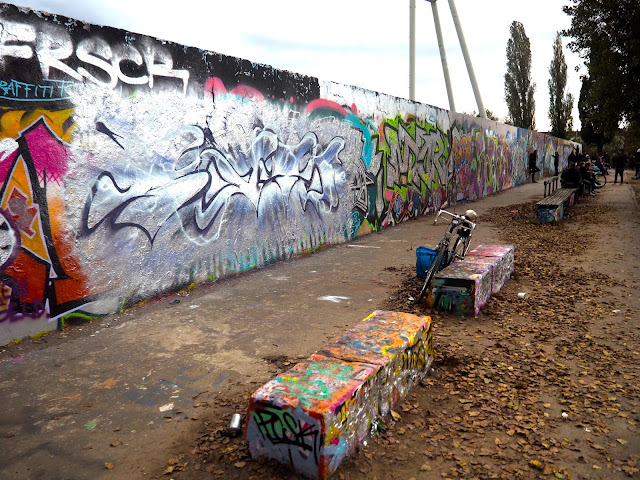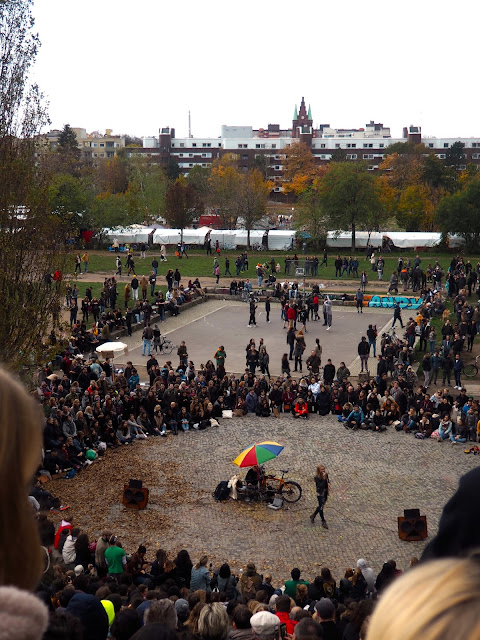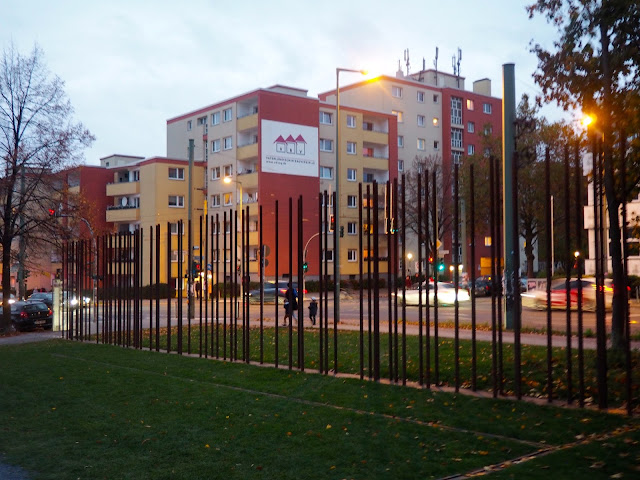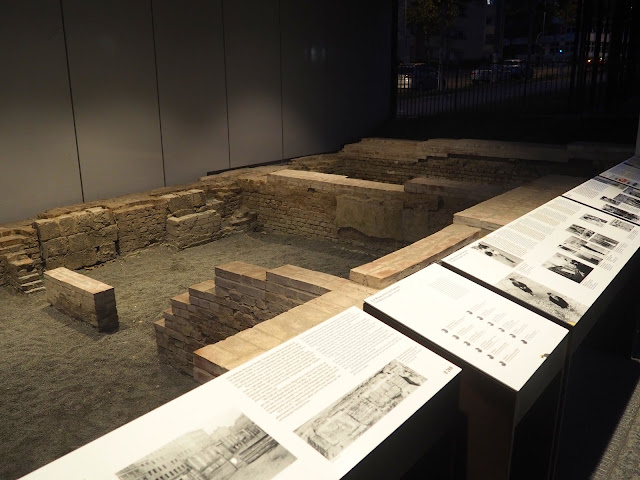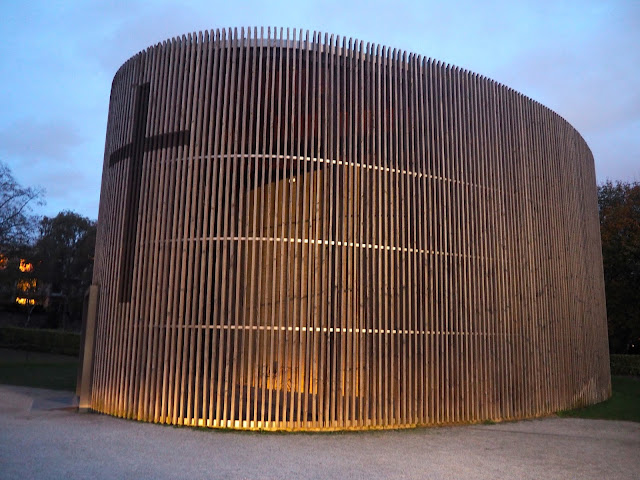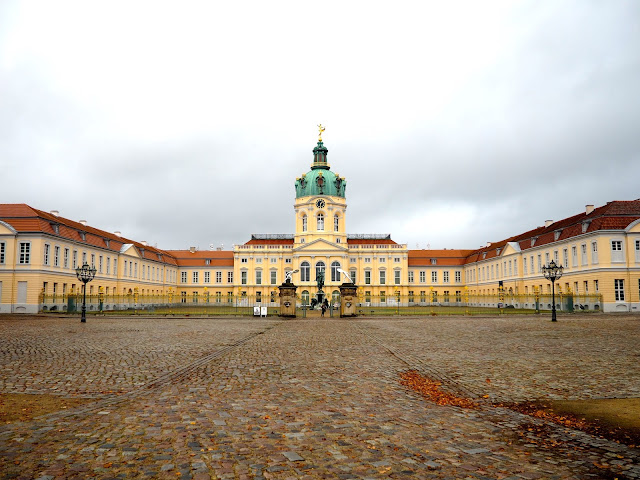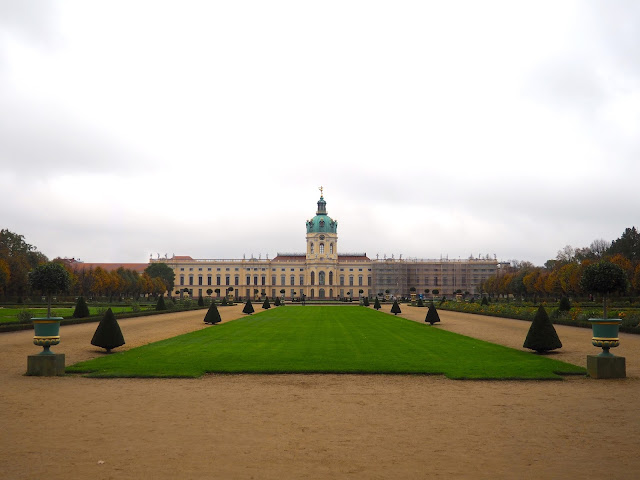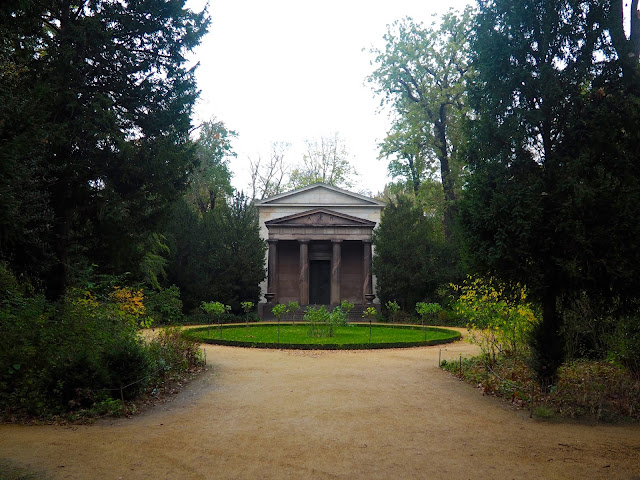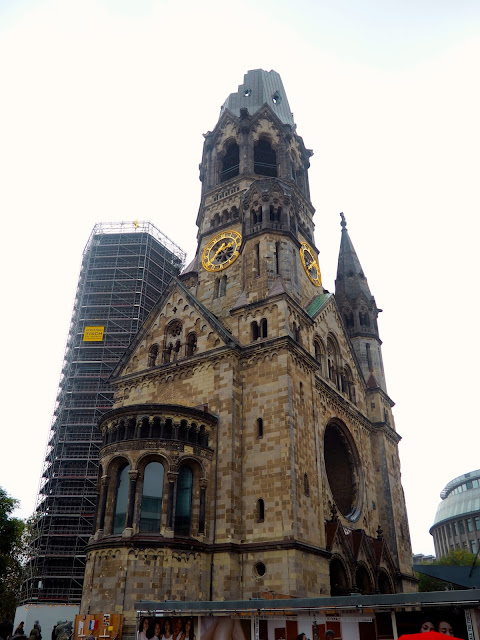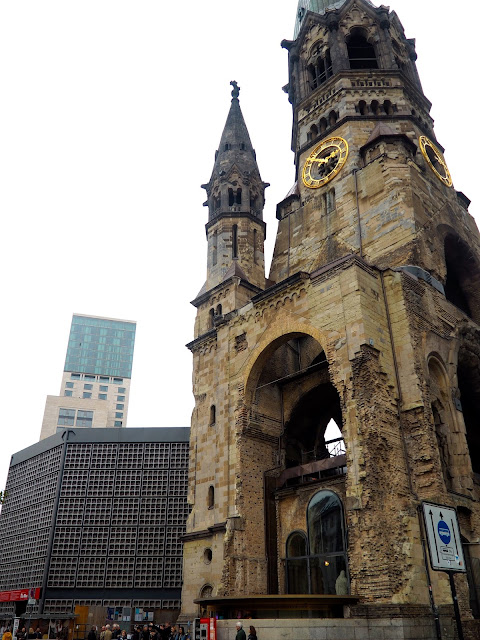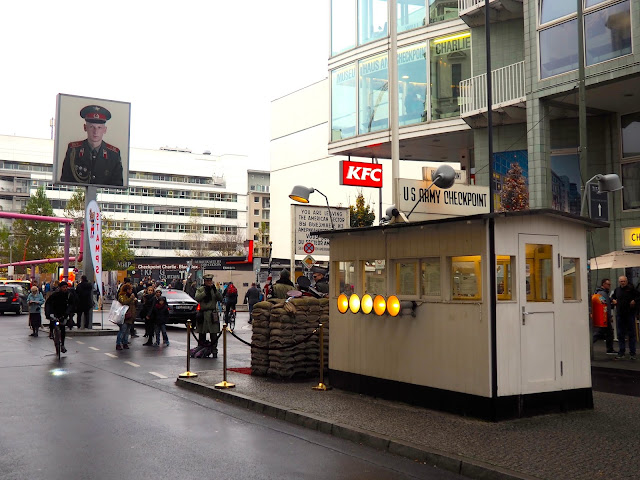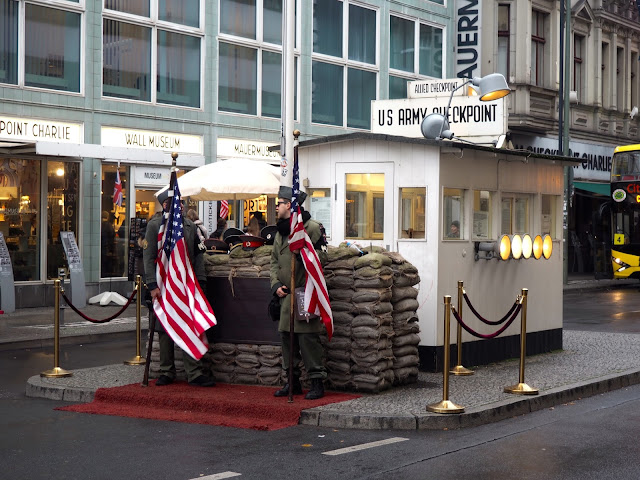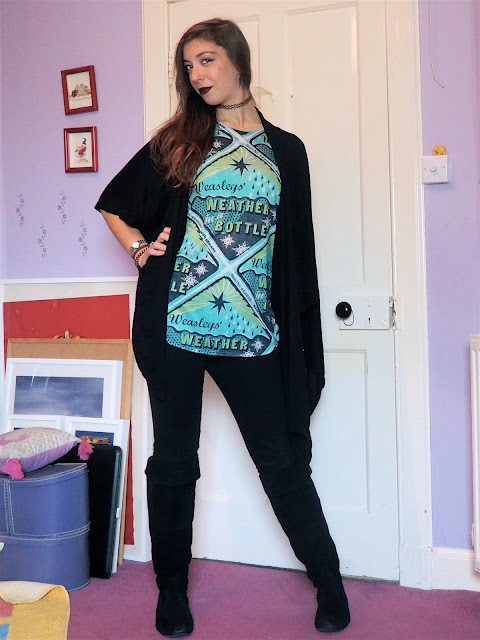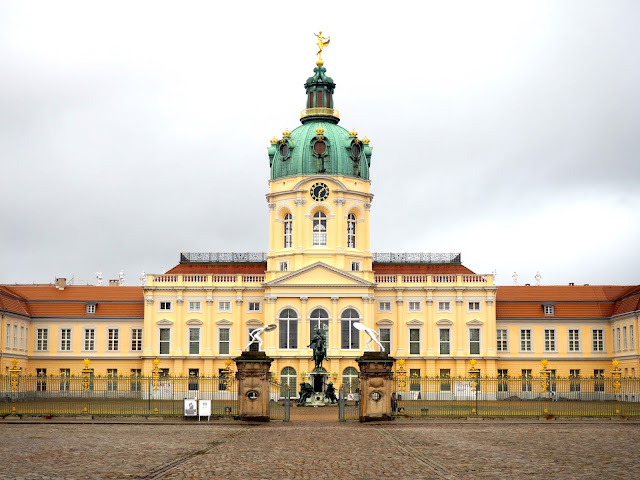
Best of Berlin | Part 2
After ticking of many of the city centre main attractions on my first day in Berlin, and spending the second day doing not very much, the second half of my trip was spent visiting the other attractions that are a little more spread out around the city. Berlin’s transport systems, including the buses, U-bahn, and S-bahn, make it a pretty easy city to navigate, so the distances between these sights didn’t matter too much. I’d bought a week pass for the transport system too, so I could hop on and off and changes lines as much as needed, without the cost being an issue. Day three was spent on the east side of the city, visiting parts of the Berlin Wall in particular, and day four was a slightly scattered mix of whatever was left that I hadn’t seen. It would probably be possible to visit most of these sights in fewer days than I took, or equally, to spend longer in Berlin going inside more locations and museums than I did, for the real history buffs. I felt it was a good amount of time for me though, able to see a lot, without feeling too rushed.
We got up around midday on day three (the Sunday), and hopped on the train to the east side of the city, and got off at Treptower Park, to visit the Soviet War Memorial. We had a brisk, autumn walk through the park first, following the trails of yellow leaves through it to find the memorial. It’s a huge memorial actually, much bigger then I’d realised. First, we came across the statue of a woman, representing the grieving motherland, and from there, a path runs up through the weeping birch trees to the centre of the memorial. You find yourself flanked by two soldiers in front of stylised Soviet flags, and then this looks over the main portion of the memorial down below. At the far end is a raised statue of a Soviet soldier holding a German child, and there are stone sarcophagi along the sides, engraved with war scenes and Stalin quotes. It was all built to commemorate the Soviet soldiers who died in the Battle of Berlin at the end of WWII. I wasn’t really sure what I’d been expecting from this memorial, but certainly nothing of this size and scale, as it really was massive. We probably spend an hour or so walking around it, and the rest of Treptower Park getting there and back. We walked back to the station along the riverside, where we passed food stalls and boats moored along the banks.
Next, we took the train back again and got off by the East Side Gallery. This is one of the most well-known portions of the wall still standing, maintained as a memorial, and you’ll know the bit I mean when I say it’s covered in graffiti and wall art. You can view art on both sides, but the side facing the street is a bit more colourful and interesting. Some portions seem to be just graffiti, but most of it is pieces done by specific artists from all over the world (their information is listed at the bottom of the wall). There are pieces that have been graffitied on top of, or eroded by weather, but restoration has been happening I believe. The kissing one is probably one of the best well known, but lots of others were interesting too, and many had messages about Berlin – either about peace, or the reunification, or its international place in the world. There’s a large part in the middle with lots of colourful, very detailed design, which is definitely the most popular area for people to pose in front of. We walked down this side, then back up on the side facing the river, which has, rather than art, stories and images to commemorate stories of people from the time when Berlin was divided, about the surveillance they were under or the punishments they faced. We stopped by the river on this side for a snack, from which we could admire the towers of the Oberbaum Bridge, occasionally spotting a train passing over or a boat coming under it, before carrying on to our last destination of the day.
We continued learning about the Berlin Wall by heading towards the Wall Memorial, not before taking a quick detour through Mauerpark on the way. Bridget explained how its a popular spot to come relax and drink on a Sunday, and there’s a flea market nearby, though by October, it’s a bit too cold to be doing that all day! We took a wander through though, seeing people spraying their graffiti on the wall at the top of a hill, and stopped to watch the karaoke. Yep, karaoke. It definitely reminded me of the street karaoke near where I lived in Hong Kong, where people turned up with a microphone and backing music on weekend evenings and sang their heart out in the street. In this case, it was a stone amphitheatre, with one guy in charge, taking volunteers from the crowd to come down and sing along to something on the karaoke system set up there. There was a big crowd watching, some even getting up to dance around the singers sometimes. We stayed for a couple songs, and I was throughly entertained by the whole thing, before going to warm up with coffee – it really was freezing that day! We had to stay outdoors a little longer after the coffee though, as the Wall Memorial is all outside. This portion used to run along Bernauer Strasse, and its location is now marked by a copper fence instead. There are information signs along the length of it, explaining how the street was literally bisected by the wall, often separating families. There were stories about people jumping from windows to escape to the other side, and many buildings along this street were actually demolished to prevent this, and you can see the remains of their basements. There is also a cross to commemorate the graves that had to be moved from the area, and the site of a church which was demolished to make way for the wall. A new one has since been erected, but much smaller, with modern architecture. There’s also a memorial to the people who lost their lives at the wall, either guards or those trying to escape to the West. I definitely learned a lot more history here than I knew previously, so it’s worth a visit in that respect.
We returned home and turned in for the night after that, ready for one last day to go exploring the city. First up, I was keen to visit my palace – Schloss (palace) Charlottenburg. Obviously not actually named after me, but a girl can dream! It was named after Queen Sophia Charlotte of the Prussian Royal Family, who commissioned it, and it was completed in 1699. Her husband named it for her after her death. We didn’t pay to enter, as Bridget said it was damaged during the war, so most of the rooms inside are empty, and there isn’t much to see really. We took pictures of the grand exterior though, and peeked in the front windows. We took a wander through the gardens though, as those are free, walking past the manicured lawns and sculpted topiaries, to the pond at the far end. The park extends all around the pond, and we walked through following the signs for the mausoleum. It was closed that day, but we could still see the rather ominous looking exterior. We looped all the way to the front of the Palace again, where Bridget explained there’s a Christmas market that happens there – kind of wished I’d visited in December instead! – before we hopped on a bus across town.
We hopped off again and made our way to the Kaiser Wilhelm Memorial Church. This is definitely a unique site to visit, as the original church was destroyed by bombing raids in WWII, and now only the spire remains. The spire has been preserved in its damaged state, instead of being fully restored, as a reminder of the war, and its ground floor is now a memorial hall. Here, you can see photos and a model of how the church once looked, as well as statues and other relics still remaining. A new church was built though, designed by Egon Eiermann, who won the competition for it. The damaged spire was preserved, and a new church built next to it, as well as a second tower (matching the church’s design) on the other side. Both the church and tower are hexagonal in shape (the tower was covered in scaffolding during our visit though), with flat tops, and built of concrete and steel. The interior of the church is completely lined with small, blue panes of stained glass, created a fairly dark and atmospheric setting. There’s a cross at one side and the organ on the other, and chairs set up in pews, but it’s a very modern design for a church, a stark contrast to the traditional design of the damaged spire and the old, now demolished, church that once stood here. It was fascinating to see them side by side though, and have this reminder of the horrors of war, next to this modern and unique new building.
Our final stops of the day, and of my whole trip, also pertained to Berlin’s history, both of the Wall and WWII. We caught the U-bahn again, and got off at Checkpoint Charlie, another famous portion of the Wall. This was the best known crossing point of the Wall, where the American sector of West Germany met the Wall, separating it from the East. There isn’t really much to see here – in the middle of the road, there is a checkpoint office, and a couple of guys stand outside it, in uniform and holding American flags, which people can take photos with – I never did find out if they were German or American though? There’s a lot of signs around saying Checkpoint Charlie, and plenty of tourist shops too, and a large portrait hanging above the checkpoint, with an American solider on one side and a Soviet soldier on the other. I didn’t get a photo with them, and it didn’t take long to snap a quick picture then carry on – definitely an underwhelming site, considering its popularity I’d say. We stopped off for a coffee nearby, then carried on down the road towards the Topography of Terror.
I’m not much of a museum goer, as I would have been to hundreds all over the world at this point, unless it’s a museum that comes particularly recommended, or has unique history about its location. Berlin has several others museums, which seemed like they’d be typical of most in Europe, especially in their art collections and the like. The Topography of Terror seems to be the best to visit in the city though, as it is a museum about Nazi Germany and the Holocaust – definitely the darkest time in Germany’s history, but it’s good to see that they aren’t forgetting it or trying to brush it under the rug, and of course, this is quite a unique museum in the grand scheme of things. The building is on the site of the former headquarters of the Gestapo and the SS during the Nazi regime, whose original structures were demolished. Ruins of the cellar where the Gestapo held prisoners have been excavated though, and can be viewed outside the museum. It’s free entry to go inside, and don’t forget your reading glasses. The main exhibition is one room, and consists of a series of hanging boards, with photos from the Nazi era, and explanations of them and the events happening at the time, starting from Hitler’s rise to power in the early 1930s, and finishing with the trials of Nazis after the war. I had a basic understanding of this history from school already, and I certainly didn’t read every single part of these numerous boards, but it was still very interesting, and I learned a lot more about it all. There’s also so many photos there that you’d likely not see otherwise, and I was simultaneously disgusted by some of them – such as photos of hangings and shootings – and fascinated by how these photos were allowed to be taken at all, when they show such despicable acts. We spent quite a while inside, as there is a lot to read, even if you skim past parts of it. Details about the German population’s opinion of Hitler in the early days, showing how he was able to come into power, and the thought that many Nazis escaped under new names, and could have descendants who are clueless of their ancestry, were particular morsels of food for thought.
We left the museum and headed back to the U-bahn again, making a quick pitstop to try currywurst from what is supposedly the original food stall selling it – I hadn’t eaten much German food during my trip, but this was a good one to try on my last day! Then we stopped off somewhere else for a few beers in a bar, to celebrate the last night of my holiday, before heading home for the night, ahead of my early rise the next morning to catch my flight home. Berlin was perhaps not my favourite of European cities, lacking some of the beauty and charm and character of other locations, but it’s got plenty of history to discover, especially when it makes a point of remembering the darker periods of its past, not sweeping them out of sight. You could hit all the main sights in just a day or two, or spend much longer visiting them all in more detail, and seeing the numerous museums, but I felt my trip was a happy medium of the two, and of course, it was great to be able to visit a friend in the same trip. I’ve only visited Germany very briefly in the past before too, so now I feel I’ve seen and understood a bit more of the country. Now, how long will my itchy feet stay still this time?
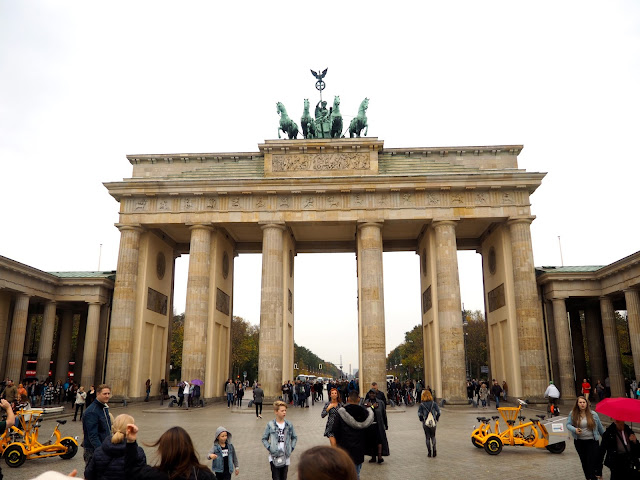
Best of Berlin | Part 1
You May Also Like

A-Z Travel Wish List
5 March 2017
Utah’s National Parks | Zion & Monument Valley
24 February 2024